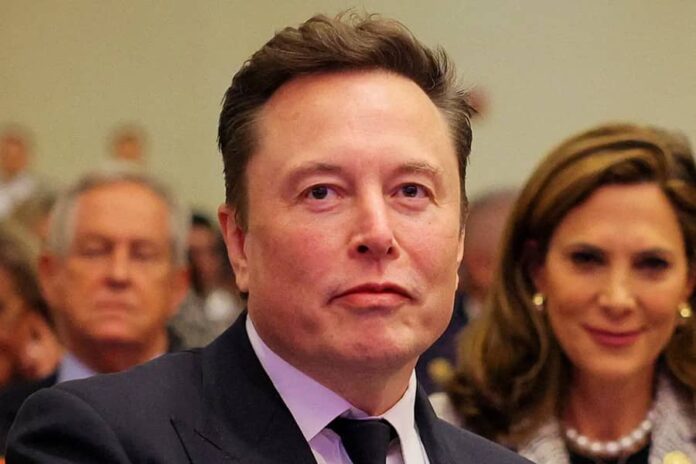Billionaires Elon Musk and Vivek Ramaswamy are offering some insights to President-elect Donald Trump about federal spending, but they also have thoughts on the U.S. workforce.
They’re encouraging him to consider increasing the number of foreign tech workers in his upcoming administration. This has ignited a bit of a debate among Trump’s supporters online, especially regarding immigration and the tech sector.
Many tech companies depend on the H-1B visa program to hire thousands of skilled workers from countries like India and China each year.
The industry has been pushing for more H-1B visas to attract top talent to America, but during Trump’s first term, he tightened restrictions on this program in 2020, claiming it allowed companies to replace American workers with cheaper foreign labor.
Now that conversation is back in the spotlight after Musk—who once held an H-1B visa himself and whose company Tesla has utilized this program—defended the need for foreign talent in tech.
Ramaswamy also chimed in with a post on X, saying that American culture seems to celebrate mediocrity instead of excellence, resulting in a lack of top-notch engineers.
Musk echoed this sentiment on December 25th, stating that there’s a constant shortage of high-quality engineering talent, which he sees as a major barrier for Silicon Valley’s growth.
What sparked the latest discussion surrounding the H-1B visa?
This week, a heated discussion kicked off when Laura Loomer, a right-wing social media personality known for her controversial and often racist remarks, took aim at Trump’s choice of Sriram Krishnan as an AI policy adviser for his upcoming administration.
Krishnan supports increasing skilled immigration to the U.S., which Loomer slammed as not America First. She accused tech leaders who back Trump of being motivated by self-interest rather than national concern.
This sparked a lively exchange with David Sacks, a venture capitalist and former PayPal executive whom Trump has appointed as the White House A.I. & Crypto Czar. Both Elon Musk and Vivek Ramaswamy, who are assisting Trump in streamlining the federal government, defended the tech sector’s need for foreign talent.
The conversation quickly expanded to include various hard-right voices debating the importance of hiring American workers, whether American values can produce top engineers, issues surrounding free speech online, the growing clout of tech figures in Trump’s orbit, and what his political movement truly represents.
Who is eligible to obtain an H-1B visa?
According to U.S. Citizenship and Immigration Services, the H-1B visa is designed for skilled professionals who possess both theoretical and practical expertise in a specific area of specialized knowledge.
To qualify, these individuals need at least a bachelor’s degree in their field and must have received a job offer from a U.S. employer.
Plus, that employer has to pay them at least the same salary as other workers with similar qualifications or meet the average wage for that role in the local area where they’ll be employed.
What is the number of employees granted H-1B visas?
Every year, the U.S. has a limit of 65,000 new H-1B visas available. If you have a master’s degree or higher, you might be in luck because there’s an extra 20,000 visas up for grabs just for those folks, according to USCIS. These visas are good for three years initially but can be extended for another three.
Plus, every year the U.S. tends to approve extensions for those already working under H-1B visas. In fact, a report from 2023 showed that they approved over 309,000 requests from people wanting to keep their jobs through this program!
Which nations are the origins of H-1B visa holders?
Did you know that over 70% of H-1B visa holders come from India? That’s a pretty big chunk! China follows behind, making up more than 10% of the recipients. The rest of the H-1B visa holders come from various countries like Canada, Korea, the Philippines, Mexico, and Taiwan, based on a report from USCIS.
What’s the discussion surrounding H-1B visas all about?
Tech companies argue that H-1B visas, which are essential for skilled workers like software engineers, play a vital role in filling tough job vacancies.
However, there are critics who believe these visas undermine opportunities for American citizens who could fill those roles. Some voices from the right want to see the program scrapped altogether rather than expanded.
Investigations, such as a 2017 report by CBS’s 60 Minutes, revealed that while many businesses utilize the H-1B program properly, some have exploited it to swap out American employees for cheaper temporary foreign labor.
What are Donald Trump’s views on H-1B visas?
Trump hasn’t commented on the ongoing divide yet, and his transition team didn’t reply to our request for a statement. However, over the years, his views have shown the split within his own supporters.
His hardline stance on immigration, especially his promise of mass deportations, was a key part of what got him elected. While he’s zeroed in on illegal immigrants entering the U.S., he’s also pushed for limits on legal immigration, like family-based visas.
Back in 2016 when he was running for president, he described the H-1B visa program as very bad and unfair to American workers.
Once in office, Trump took action with a 2017 executive order called Buy American and Hire American, which instructed Cabinet members to propose changes so that H-1B visas would go to the highest-paid or most skilled applicants—essentially to safeguard American jobs. Then in 2020, his administration mandated that employers pay H-1B visa holders higher wages to discourage companies from opting for cheaper foreign labor.
